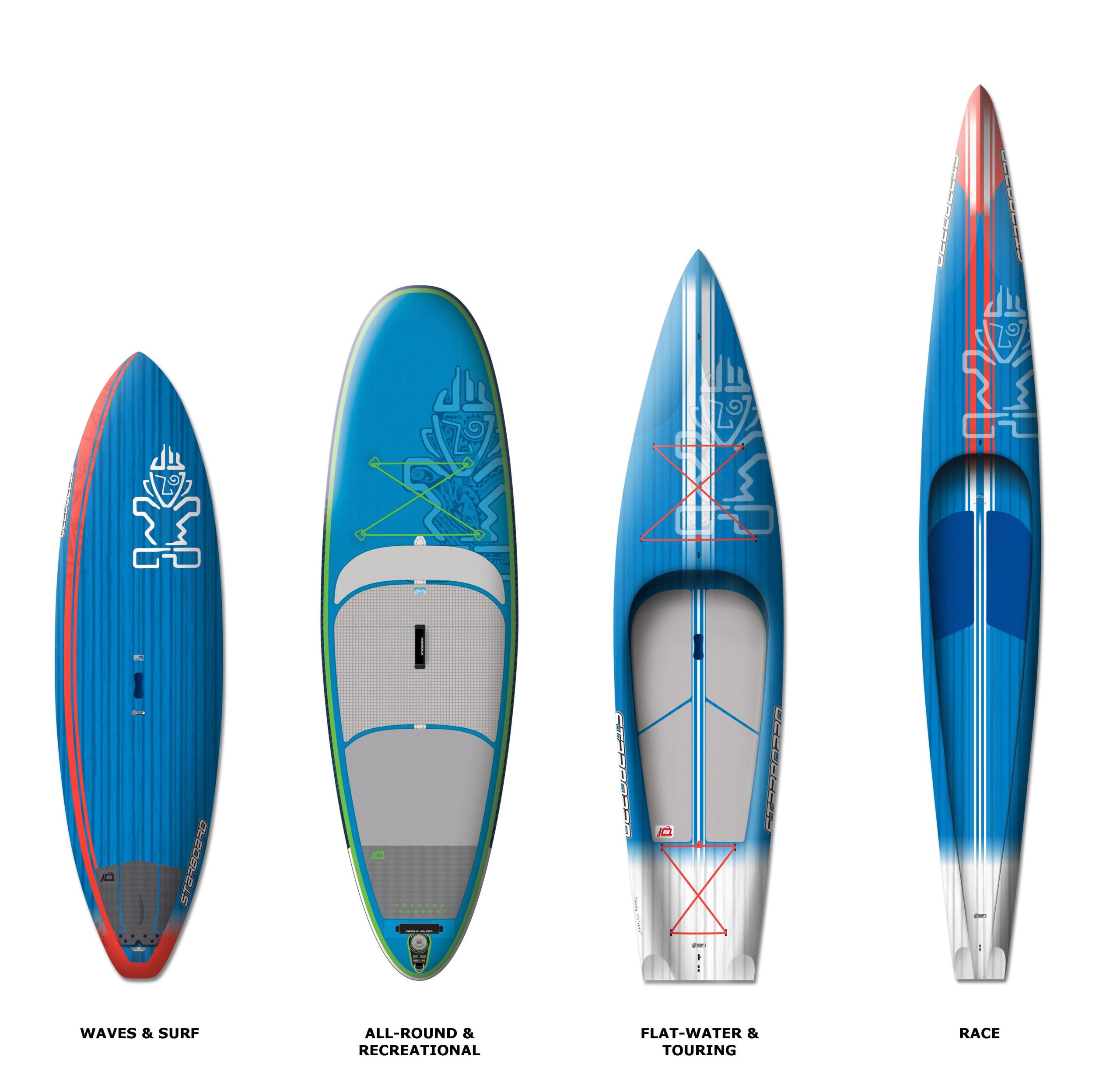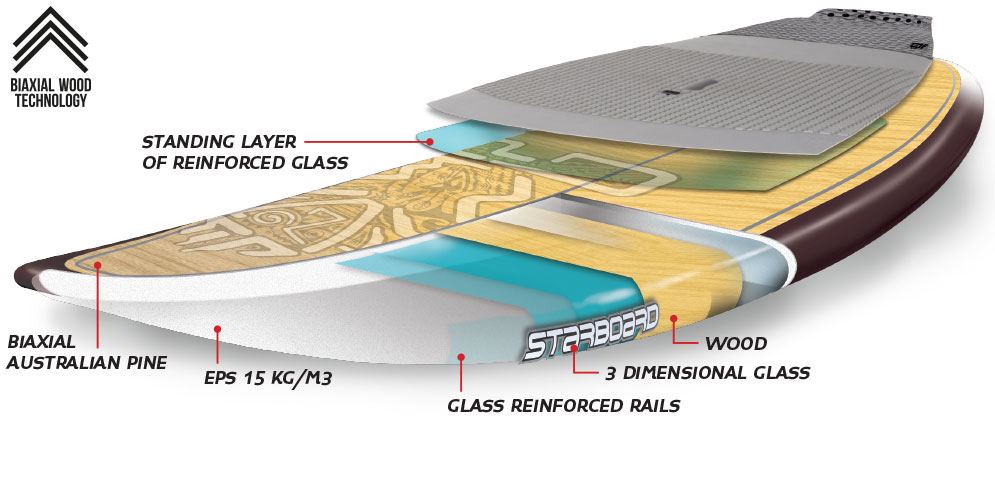So you want to get into one of the fastest growing and most popular water sports in Cape Town, or you simply want to upgrade your current Stand Up Paddle board (SUP)? It can be somewhat daunting and even confusing to wade through the multitude of SUP brands, models, sizes and constructions out there to find the perfect SUP for you, so here is a basic guide to assist you in making an informed choice.
In short, here are the considerations in choosing a suitable SUP:
1. INTENDED USE OF SUP >> Determines basic shape/construction of SUP
2. WEIGHT/HEIGHT >> Determines volume and dimensions of SUP
3. SKILL LEVEL >> Determines more exact volume/dimensions and finer shape of SUP
4. CONSTRUCTION >> Fine tunes weight/performance of the SUP
SUP sizing – although there are different shapes and constructions of SUPs, they are all measured in terms of Length (feet), width (inches), thickness (inches) and volume (litres). These dimensions all play a role in the stability, glide, manoeuvrability and speed on the water, and the weight that they can carry.
1. INTENDED USE OF SUP
As you have already decided to try out Stand Up Paddle boarding, you probably have a good idea what you want to use the SUP for. This decision will determine the basic shape of SUP that will be suitable for your intended use.
Some basic SUP shapes:

Here are some possible uses for SUPs and the basic shape that would be suitable.
| INTENDED USE: | BASIC SHAPE/CONSTRUCTION: |
|---|---|
| Recreational Play around with a SUP on weekends or holidays only, maybe on a dam, lagoon, river or the sea when there are no waves. | Inflatable SUP | All-round SUP |
| All-round Use the SUP for a variety of activities from flat water to waves, long-distance to fitness. | All-round SUP |
| Wave-riding Use a SUP to ride on small to big waves in the sea. | Wave-riding | surf SUP |
| Touring/exploring Paddle long distance to explore rivers, coastlines and inland water bodies | Touring | Exploring SUP |
| Racing Paddling as fast as possible on race courses or even just for your own fitness. | Racing SUP |
| Yoga/fitness Balance and stretching exercises on a SUP while on the water. | Yoga SUP |
2. WEIGHT/HEIGHT
Weight to volume
Your weight is a determining factor in the size of SUP that is suited for you. Primarily, the heavier you are, the larger the volume of the SUP. Secondary to this, the more skilled you are the smaller in volume you can go. There is a basic formula you can use as a guideline to choose the correct volume:
Height to length/width
Although your weight mostly determines the suitable volume of your SUP, taller paddlers will require a longer and/or wider SUP to provide more stability for the higher centre of gravity.
3. SKILL LEVEL
Generally when you are just starting out with SUP boarding, a bigger and more stable SUP is better for your progression. More specifically, you need to get a SUP size/volume that is suitable for your weight and height though.
As a beginner you can look at it from 2 possible angles:
– Get a larger more stable SUP:
Even a bit too big for your weight, to make your progression easier in the beginning; once you are competent, you can upgrade to a SUP suitable for your weight and intended use. Many beginners will initially purchase a second hand SUP in this case.
– Get a SUP that is suited exactly to your weight:
And intended use for the future. You may struggle somewhat in the beginning, but will “grow” into your SUP over time. Beginners who just want to buy once will go this route.
4. CONSTRUCTION
Once you have determined the SUP metrics that are most suited for you, you can fine-tune this further with different construction types. Although the 2 main construction categories are inflatable and hard construction, the decision between these 2 is more related to recreational versus serious SUP-ing, or simply due to convenience of transportation.
Inflatable
Inflatable SUPs are basically made from layers of PVC plastic with woven fibres connecting to the top and bottom inside the board. The SUP is inflated with a hand-pump to the desired pressure.

Hard construction
Hard construction SUPs are made basically of a foam (EPS or PU) core, with a wrap-around of fibreglass, wood or carbon in different combinations. There is usually a sunken handle in the centre of the deck, and usually a 3 or 4-fin setup. Herewith considerations when choosing the different construction types
Fibreglass
This is the most common construction, providing the best combination of weight, performance and price. This is mostly the choice of beginner to intermediate paddlers.

Wood
Fibreglass is replaced in many parts of the SUP with wood veneers, resulting in a slightly lighter SUP. For intermediate to advanced paddlers, this offers slightly better performance.

Carbon
Fibreglass is largely replaced by carbon fibre, the composite with the best strength to weight ratio. Carbon SUPs offer the best performance for advanced to expert paddlers who want the most manoeuvrability and ease of use in the harshest water conditions.

SUMMARY/CONCLUSION
This guide provides a very basic introduction to finding a suitable size/construction SUP, especially to first-time buyers and beginners. There are further considerations for advanced and expert paddlers like rocker lines, nose and tail shape, volume distribution and fin setups. However, in most cases the SUP brand combines the optimal features into a SUP that is suited for your skill level so you don’t have to make these finer decisions yet.
If you are still unsure as to what SUP to get for yourself, nothing beats giving SUPing a try first or testing a different model of SUP before buying. If you are keen to take your SUPing experience further, why not try out a SUP Lesson with Board and Kite Africa. You may also be keen to shop our Starboard SUPs or even Rent a SUP before you decide which one is for you.
